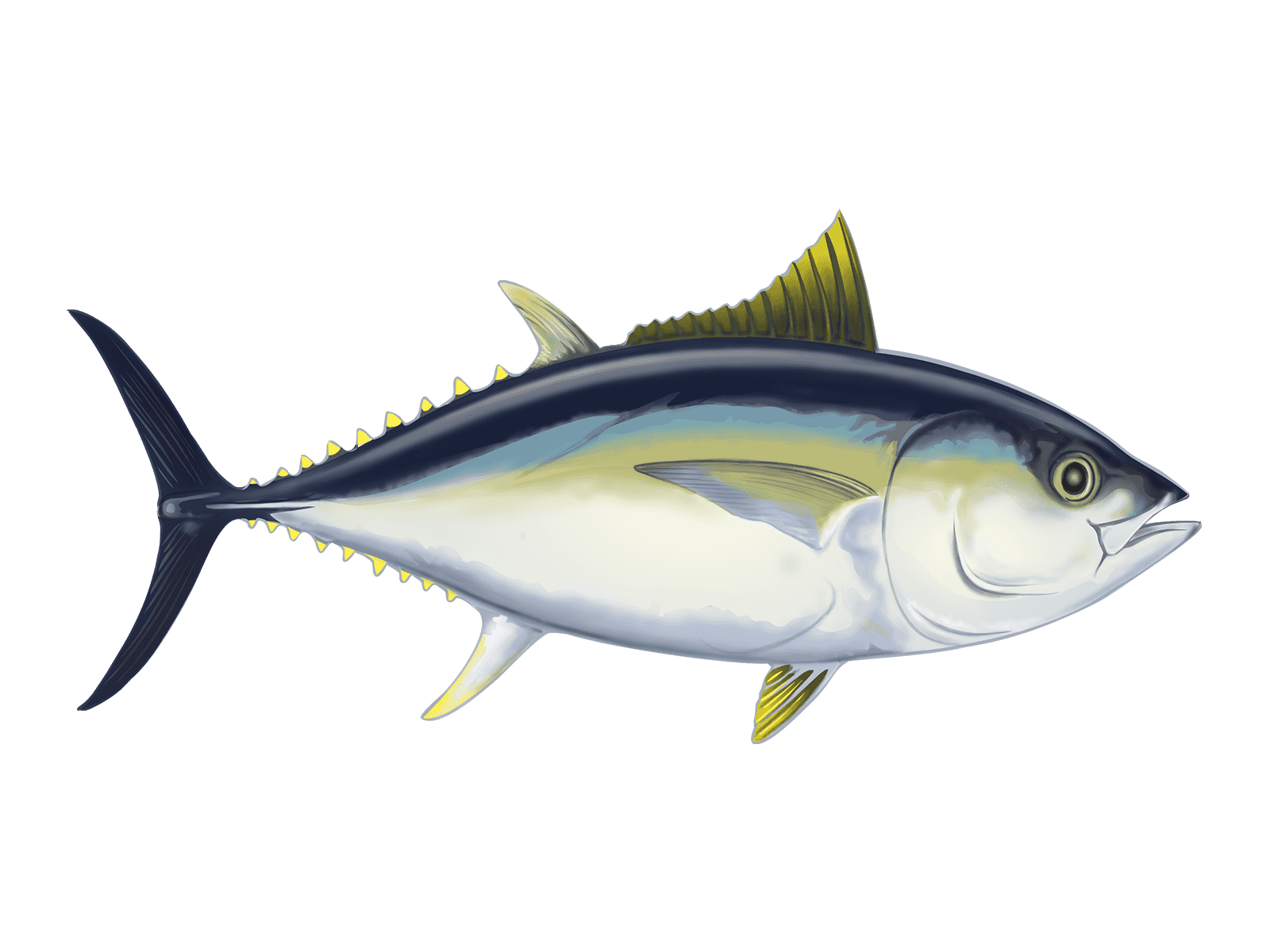Bigeye Tuna

Species Details
Thunnus Obesus
Scombridae
Perciformes
Offshore
150 - 300 lbs.
41" - 98"
Bigeye Tuna (Thunnus obesus) Fish Description
Also known as Ahi, Atlantic Bigeye have huge, streamlined bodies with large heads and eyes. They have very long pectoral fins and possess 13 or 14 dorsal spines.
Atlantic Bigeye have a unique physiology which allows them to forage in deeper colder waters and tolerate waters with poor oxygen levels. Atlantic Bigeye are reported to reach depths where ambient oxygen content is below 1.5 ml/L due to the presence of blood with a high oxygen affinity.
Diet and Size
Atlantic Bigeye feed mainly on epipelagic and mesopelagic fish, crustaceans and cephalopods. Epipelagic fish inhabit the epipelagic zone, also referred to as surface waters; species such as the Atlantic Herring can be found here.
The Atlantic Bigeye also find their prey in the mesopelagic zone, also known as the Twilight Zone, due to the depth being dark and only 1% of incident light reaching through it. Species like the lanternfish and bristlemouth can be found in this zone.
The Atlantic Bigeye can grow up to 98 inches. Maximum weight of individual bigeyes exceeds 400 lbs.
Interesting Facts About Atlantic Bigeye
- Fishing for Atlantic Bigeye started in the autonomous regions of Portugal in the islands of Madeira and the Azores in 1950.
- Atlantic Bigeye generally are of the same size of the yellowfin tuna, and smaller than the bluefin tuna.
- The Atlantic Bigeye is a pelagic fish; meaning, it is fatty and not recommended to be gutted at sea because it spoils quickly unless chilled immediately after being captured.
- The Atlantic Bigeye is currently the most valuable tuna landed by weight worldwide due to their fatty meat. The price of Atlantic Bigeye has rapidly increased in recent years, with the prices of the highest quality fish now comparable to the Bluefin Tuna.
- Atlantic Bigeye spawn throughout the year but most often in the summer, releasing between 3 million and 6 million eggs each time they spawn. Examination of ovaries suggests that the fish spawn during the warmest months of the year, or May to August in the Northern hemisphere.
Bigeye Tuna Fishing Techniques
Under the 2006 Consolidated Atlantic Highly Migratory Species Fishery Management Plan, commercial fishermen must have a permit to harvest Atlantic Bigeye. Federal management for Atlantic tunas applies to state waters, except in Maine, Connecticut, and Mississippi.
Atlantic Bigeye are best caught just before dark or at dawn. This is either because of the fact that their sensitive eyes better tolerate the dimmer conditions or that other baits begin moving closer to the surface at around those times. Anglers even troll in the dark, and many have caught Atlantic Bigeye well after sundown. For anglers interested in hunting, consider moving out an hour before sunset to take a shot at this species. Different lures can also catch Atlantic Bigeye, and a variety of patterns can be successful. Short and stocky lures in the 8- to 10-inch range work great.
Dark colors stand out better in dim conditions. A recommended lure is the Braid Bigeye Rocket, this simple lure, draws them in. Other good choices include Moldcraft Hookers, large jets, Joe Shutes, etc. Spreader bars on short-riggers also work well.
Bigeye Tuna Habitat & Distribution
Bigeye Tuna are generally found in the warm temperate waters of the Atlantic, Pacific, and Indian Oceans. Interestingly, they are not found in the Mediterranean Sea.
Bigeye Tuna are highly migratory, travelling long distances, and are found in depths of 250 meters. In the western Atlantic, they are more commonly found in Southern Nova Scotia to Brazil. The known spawning areas of Bigeye Tuna are large swaths of ocean spanning the equator from 3°-10° N and S.







